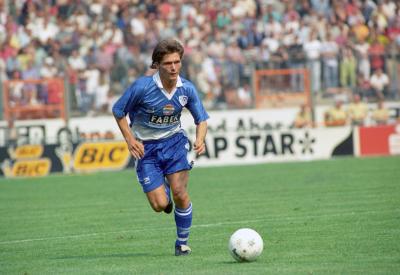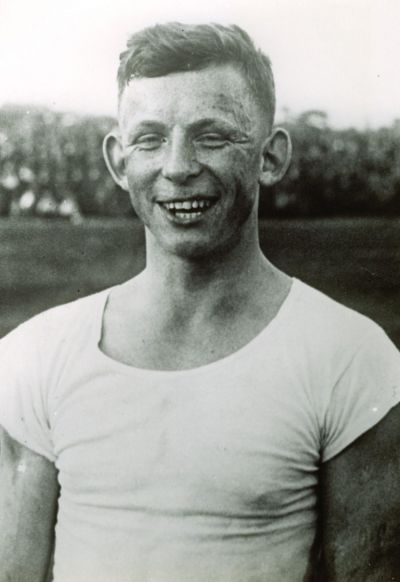From the Sokół club to Dariusz Wosz – Polish sport in Bochum

Bochum was the organisational centre of the Polish-speaking[1] migration to the Ruhr area that characterised the long 19th century in the industrial region and engineered the coalmining district as a vast migration area and Polish “ethnoscape”, an experiential space in the migration process. The city became the heart of the self-organisation of a “Polish movement”[2] which attempted to accompany, moderate and politically articulate the process of immigrating and establishing new social structures and identities. Hundreds of thousands of Polish-speaking people and Masurians[3] from the eastern territories of the German Reich immigrated to the coalmining district before the First World War and, prior to 1914, created a resident population of an estimated 500,000 people, including Masurians[4]. It was not long before the Polish immigrants lived in ethnic residential colonies which changed the face of the cities. They developed a differentiated clubs life, with 875 associations, in which more than 80,000 migrants were organised, and founded a Polish trade union headquartered in Bochum as well as their own Polish-speaking press. The largest Polish daily newspaper “Wiarus Polski” (English "Polish mater or miner") was edited and printed in Bochum. The paper had a circulation of between 10,000 and 12,000 copies and was published by Jan Brejski, a member of parliament and influential politician in the Ruhr area. As a politician, trade unionist and member of numerous Polish associations, Brejski embodied the “Polish movement”. The headquarters of the Union of Poles in Germany was also located in Klosterstraße (which today is called Am Kortländer) in Bochum.[5]
Soon, gymnastics clubs, the so-called Sokół societies, which bore the falcon (Polish “sokół”) in their crest as a symbol of courage and boldness, were also part of the immigrants’ self-organisation. With their processions, gymnastics festivals and club life, the Sokół societies were a fundamental part of everyday life in the Polish community, they were visible to the outside world and, with their connections to the Polish headquarters of the Sokół society in Poznań (Związek Sokołów Polskich w Państwie Niemieckim/Polish Sokół Association in the German Reich) and with their Polish nationalist alignment, they were a provocation for the Germanisation efforts of Prussian-German politics[6]. For this reason, the societies were regarded with suspicion by the Pole monitoring body which had also been established in Bochum.
Although the Sokół societies, which numbered 117 associations prior to the First World War, were the second largest association in the framework of Polish clubs in the Ruhr area after the religious organisations[7], they have been very much neglected in written history. The educated middle-class view of the historiography of the Federal Republic has long failed to attribute much importance to the sporting leisure activities; in the history of the People’s Republic of Poland, the scientific study of the association was frowned upon and prohibited due to the middle-class dominance in the Poznań headquarters and the nationalist alignment.[8]
[1] Between 1772 and 1795, the Polish state was annexed by the major powers Prussia, Austria and Russia and split into three parts (zones). Poland disappeared from the map until 1918. The terms “Polish” and “Poland” need to be understood in this context.
[2] cf. Schade, Wulf, Kużnia Bochumska – die Bochumer (Kader-)schmiede. Bochum als Zentrum der Polenbewegung (1871-1914), in: Bochumer Zeitpunkte, 17 (2004), p. 3-21 (https://www.kortumgesellschaft.de/tl_files/kortumgesellschaft/content/download-ocr/zeitpunkte/Zeitpunkte-17-2005OCR.pdf, accessed on 27/12/2020).
[3] The Masurians, who are often confused with Poles, present a specific challenge in themselves which will not be dealt with here. The ethnic group, which mainly hailed from the Eastern Prussian districts of Ortelsburg, Neidenburg and Allenstein, was an amalgamation of an ethnic majority of Poles, assimilated Germans, Huguenots, Scots and Salzburgers. They spoke an old Polish peasant dialect, were Protestants and traditionally pro-Prussia. For the history of Masuria and the Masurians cf. Kossert, Andreas, Masuren: Ostpreußens vergessener Süden, Berlin 2001.
[4] For the uncertainty around the numbers and their discussion, cf. Bleidick, Dietmar, Bochum, das institutionelle Zentrum der Polen in Deutschland, in: Bochumer Zeitpunkte 33(2015), p. 3-9, here p. 3. https://www.kortumgesellschaft.de/tl_files/kortumgesellschaft/content/download-ocr/zeitpunkte/Zeitpunkte-33-2015OCR.pdf, accessed on 27/12/2020).
[5] For the significance of Bochum for Polish-speaking immigrants, again cf. Bleidick 2015.
[6] A detailed account of the history of this organisation, its social and political role for the migrants in the industrial region in the context of the social-historical development can be found in Blecking, Diethelm, Sport, Fußball und Migration im Kohlerevier. Polnische Migranten im Ruhrgebiet und in Nordfrankreich, in: Hüser, Dietmar/Baumann, Ansbert (publ.), Migration/Integration/Exklusion. Eine andere deutsch-französische Geschichte des Fußballs in den langen 1960er Jahren, Tübingen 2020, p. 83-111.
[7] For the club framework cf. Blecking, Diethelm, Polen/Türken/Sozialisten. Sport und soziale Bewegungen in Deutschland, Münster 2001, p. 54.
[8] For this administrative construction of history in People’s Poland cf. Blecking, Diethelm, Die Geschichte der nationalpolnischen Turnorganisation “Sokół” im Deutschen Reich 1884-1939, Münster (2nd edition) 1990, p. 23.

























